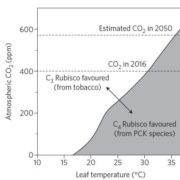
Improving Rubisco
Plant Science Research Weekly, Research0 Comments
/
Rubisco (Ribulose-1,5-bisphosphate carboxylase / oxygenase) is the enzyme responsible for fixing almost all inorganic carbon into organic form, but it is not optimized for current conditions. As temperature and CO2 levels increase, there is an opportunity to increase photosynthetic efficiency by engineering…
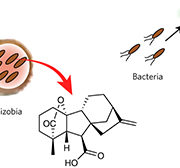
Gibberellin biosynthesis in bacteria: Still more convergent evolution ($)
Plant Science Research Weekly, ResearchGibberellin hormones were famously identified as the product of Gibberella fujikuroi, a fungal pathogen that stimulates host cell elongation, and then subsequently recognized as a hormone produced by plants as well. Fungi and plants produce gibberellins from distinct biochemical pathways, in an example…
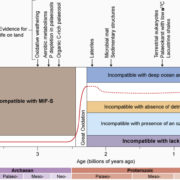
Review: Biogeochemical effects of early life on land
Plant Science Research Weekly, ResearchEarth colonization by life happened billions of years ago. Weathering of soils by microbial mats leave a characteristic signal that can be used to shed light on the mechanisms involved in colonization. In this review, Lenton and Daines discuss the growing mass of evidence that points to the biogeochemical…
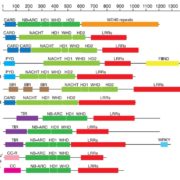
Review: Intracellular innate immune surveillance devices in plants and animals ($)
Plant Science Research Weekly, ResearchCells recognize invaders through both cell-surface receptors and intracellular receptors, the latter of which can recognize the invader directly or indirectly, for example through its effects on host proteins. Intracellular surveillance proteins in animals and plants share a core domain, the nucleotide…
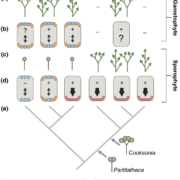
Review: Evolutionary perspective on auxin’s role in shoot branching
Plant Science Research Weekly, ResearchShoot branching increases the photosynthetic surface area and the points at which reproductive structures can form. In angiosperms, auxin (specifically, auxin depletion) has been shown to be involved in the initiation and outgrowth of shoot branches. For example, in apical dominance the primary shoot…
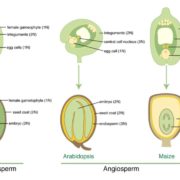
Review: Endosperm and Imprinting
Plant Science Research Weekly, Research"The endosperm is often viewed as a complicated and rather strange tissue" begins this review by Gehring and Satyaki. They go on to describe that the endosperm is the site of expression of imprinted genes, which are genes that are expressed soley when inherited from the mother or father. The authors…
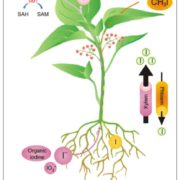
Biofortification of plants: New Reviews ($)
Plant Science Research Weekly, ResearchBiofortification is the nutritional enhancement (using conventional or genetic engineering approaches) of food with vitamins or micronutrients with the goal of improving the human diet. A set of new reviews in Current Opinion in Biotechnology summarizes progress towards biofortification of plants to…

Review: Plasmodesmata, pores between cells ($)
Plant Science Research Weekly, ResearchThe cytosol of most plant cells are connected by plasmodesmata, tiny channels that form bridges between adjoining cells (guard cells notably lack plasmodesmatal connections). Water, ions, small molecules, proteins and viruses can move through plasmodesmata. Upon wounding or infection, plasmodesmatal…
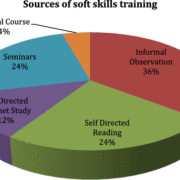
Mining the Gap: Assessing Leadership Needs to Improve 21st Century Plant Pathology
Plant Science Research Weekly, Research
Plant pathologists like all other scientists are imparted scientific knowledge and technical expertise, building the educational side of their career. Beckerman and Schneider emphasize the pressing needs of teaching ‘soft skills’ scientists need in order to improve their leadership and professional…

